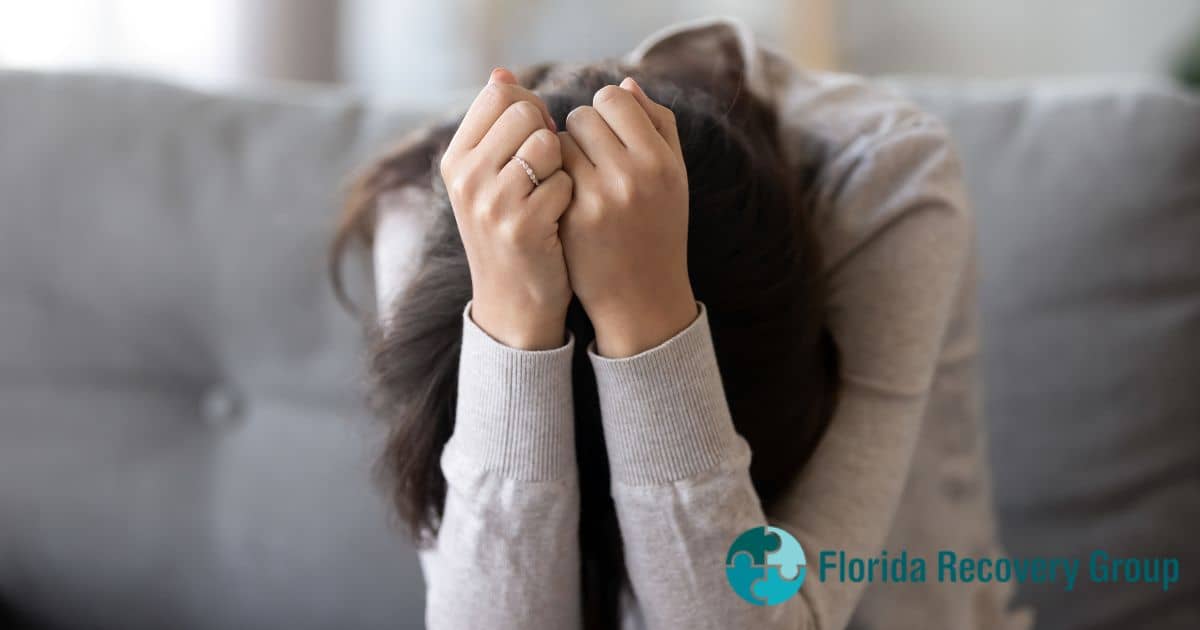
03 May What are the Different Levels of Anxiety?
Everyone feels anxious at some point in their lives. If you have ever been in a high-stress situation, like having to speak in front of a crowd or interviewing for your dream career, you have probably experienced anxiety. However, some people deal with crippling anxiety on a daily basis.
According to the National Institutes of Mental Health, “An estimated 31.1% of U.S. adults experience any anxiety disorder at some time in their lives.”[1]
While anxiety disorders are among the most common mental health conditions in America, they can become so severe that they impact your ability to function in your daily life. There are several different levels of anxiety, with each one requiring a different level of care.
Being aware of the 4 levels of anxiety can help you assess your situation and determine whether you require counseling or support.
Understanding the Four Levels of Anxiety
Anxiety conditions like social anxiety or generalized anxiety disorder (GAD) can range from mild to severe. Depending on the level of anxiety you are dealing with, you might require therapy, medications, or even inpatient care.
The four levels of anxiety include:
1. Mild Anxiety
Mild anxiety is typically described as sub-clinical, which means it is not significant enough to warrant concern. However, even mild cases of anxiety can impact your ability to function in your daily life.
Common symptoms of mild anxiety include:
- General nervousness
- Physical symptoms like sweating, shakiness, and nausea
- Appearing shy or awkward
- Being overly self-conscious
- Mild symptoms of social anxiety like being nervous when meeting new people
Mild anxiety can develop into a more serious form of anxiety once someone becomes an adult if it is left untreated. As a result, if your child displays the symptoms of mild anxiety you should seek counseling or therapy to address their issues early on. Without treatment, they could begin to adopt unhealthy coping mechanisms like substance abuse.
2. Moderate Anxiety
The next level of anxiety is referred to as “moderate anxiety” and is characterized by symptoms of mild anxiety, but symptoms occur more frequently. Because the anxiety occurs more often, moderate anxiety can begin to impact your ability to perform at work, school, or home.
Symptoms of moderate anxiety may include:
- Feeling on edge
- Being nervous or jittery
- Not being able to control your worrying
- Not being able to relax most days of the week
- Experiencing the physical symptoms of anxiety after a triggering event like being in a crowded space or meeting new people
While mild anxiety is considered subclinical, moderate anxiety should be treated with the help of mental health counseling. Typically, treatment of moderate anxiety includes individual therapy or group counseling to help you learn how to manage feelings of nervousness and stress. Receiving treatment for this level of anxiety will prevent your anxiety from worsening and keep you from developing unhealthy coping mechanisms.
3. Severe Anxiety
Severe anxiety is the third level of anxiety and is considered to be debilitating. This is when your anxiety is considered clinically significant and you will meet diagnostic criteria for a specific type of anxiety condition like generalized anxiety disorder (GAD).
Common symptoms of severe anxiety include:[2]
- Physical symptoms like shaking, excessive sweating, stomach aches, and increased heart rate
- Feelings of panic
- Social withdrawal or isolation
- Impaired concentration and memory
- An inability to control worrying
- Distress that is disproportionate to the situation
- A general inability to relax
If you have severe anxiety, you could experience an inability to work, attend school, or simply function in your daily life. Because the symptoms are frequent and debilitating, this level of anxiety must be treated professionally. Treatment may include a combination of therapy, group counseling, and medication to manage your symptoms.
4. Panic-Level Anxiety
The fourth level of anxiety is referred to as “panic-level anxiety.” People who experience this type of anxiety often meet the diagnostic criteria for panic disorder, a condition that causes recurring panic attacks that may occur for no apparent reason. This level of anxiety can be incredibly debilitating, often leading to self-medication with drugs or alcohol without proper treatment.
If you have panic-level anxiety, you will experience frequent panic attacks. Symptoms of a panic attack include:[3]
- Pounding or racing heart
- Sweating
- Chills
- Shaking
- Difficulty breathing
- Weakness or dizziness
- Tingling or numbness of the hands
- Chest pain that can feel like a heart attack
- Nausea and vomiting
In addition to the symptoms of a panic attack, people with panic-level anxiety often experience:
- Repeated panic attacks that include overwhelming feelings of fear
- Feeling out of control
- Having feelings of impending doom or fears of death
- Experiencing intense worry that you will experience another panic attack
- Avoiding places where panic attacks have occurred previously
Because of the debilitating nature of panic-level anxiety, professional treatment is extremely vital. Some individuals find it helpful to attend an inpatient rehab to become stabilized on medication and fully focus on therapy. However, it is possible to treat this type of anxiety on an outpatient basis if you have a supportive home to reside in.
Finding Help for Anxiety
If you or a loved one experience any of the four levels of anxiety, mental health treatment can help you learn how to manage your symptoms and regain control over your life. A combination of therapy, group counseling, and anti-anxiety medications can provide you with the support you need to recover.
To learn more about our anxiety treatment options, contact Florida Recovery Group today.
References:





